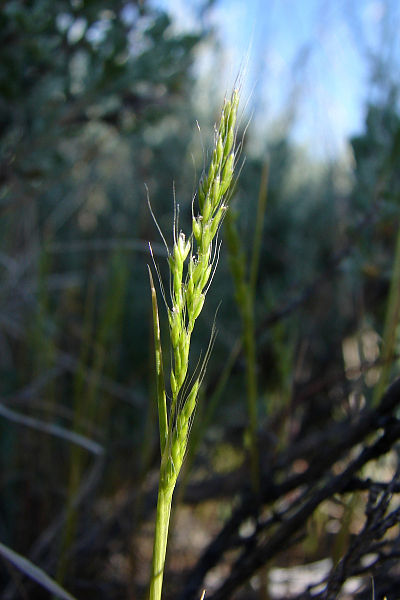Apera
|
Family: Poaceae |
Plants annual; tufted or culms solitary. Culms 5-120 cm, erect or geniculate, glabrous. Leaves mostly cauline; sheaths open, rounded to slightly keeled; collars glabrous, midveins continuous; auricles absent; ligules membranous, often lacerate to erose; blades flat or weakly involute, glabrous. Inflorescences terminal panicles, branches strongly ascending to divergent. Spikelets slightly laterally compressed, with 1 floret, rarely more, distal florets, if present, vestigial; rachillas prolonged as a bristle, rarely terminating in a vestigial floret; disarticulation above the glumes. Glumes unequal, lanceolate, scabrous on the upper 1/2, unawned; lower glumes 1-veined; upper glumes slightly shorter to slightly longer than the florets, 3-veined; calluses blunt, sparsely and shortly bearded or glabrous; lemmas firmer than the glumes, folded to nearly terete, obscurely 5-veined, awned from just below the apices; paleas equaling or to about 3/4 the length of the lemmas, hyaline, 2-veined; lodicules 2, free, glabrous, usually toothed; anthers 3; ovaries glabrous. Caryopses 1.2-2 mm, ellipsoidal, slightly sulcate; hila broadly ovate, 1/5 the length of the grains. x = 7. Name of uncertain origin, possibly from Greek a, not, and peros, maimed; Adanson provided no explanation. Like Agrostis, but the palea strongly 2-nerved, nearly as long as the relatively firm lemma; lemma with a well developed subapical awn; rachilla shortly prolonged behind the palea; annual. 4, Eurasia. Gleason, Henry A. & Cronquist, Arthur J. 1991. Manual of vascular plants of northeastern United States and adjacent Canada. lxxv + 910 pp. ©The New York Botanical Garden. All rights reserved. Used by permission. |

